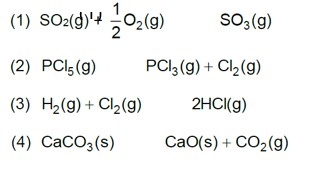Which of the following will produce a buffer solution when mixed in equal volumes?
(i) 0.1 mol dm–3 NH4OH and 0.1 mol dm–3 HCl
(ii) 0.05 mol dm–3 NH4OH and 0.1 mol dm–3 HCl
(iii) 0.1 mol dm–3 NH4OH and 0.05 mol dm–3 HCl
(iv) 0.1 mol dm–3 CH4COONa and 0.1 mol dm–3 NaOH
Which of the following will produce a buffer solution when mixed in equal volumes?
(i) 0.1 mol dm–3 NH4OH and 0.1 mol dm–3 HCl
(ii) 0.05 mol dm–3 NH4OH and 0.1 mol dm–3 HCl
(iii) 0.1 mol dm–3 NH4OH and 0.05 mol dm–3 HCl
(iv) 0.1 mol dm–3 CH4COONa and 0.1 mol dm–3 NaOH
-
1 Answer
-
This is a Multiple Choice Questions as classified in NCERT Exemplar
Ans: option (iii)
When 0.1 mol dm-3 NH4OH and 0.05 mol dm-3 HCl react total amount of HCl reacts with NH4OH to form NH4Cl and some NH4OH will be left unreacted. Thus, the resultant solution contains NH4Cl and NH4OH which will produce a buffer solution.
Similar Questions for you
0.01 M NaOH,
M = 1 * 10-2

pOH = 2
pH = 2
Kp = Kc (RT)Dng
36 * 10–2 = Kc (0.0821 * 300)–1
Kc = 0.36 * 0.0821 * 300 = 8.86 » 9
A(g) ->B(g) + (g)
Initial moles n 0 0
Eqb. moles n(1 – a) na
total moles =
Eqb. pressure
On increasing pressure, equilibrium moves in that direction where number of gaseous moles decreases.
Taking an Exam? Selecting a College?
Get authentic answers from experts, students and alumni that you won't find anywhere else
Sign Up on ShikshaOn Shiksha, get access to
- 65k Colleges
- 1.2k Exams
- 679k Reviews
- 1800k Answers


